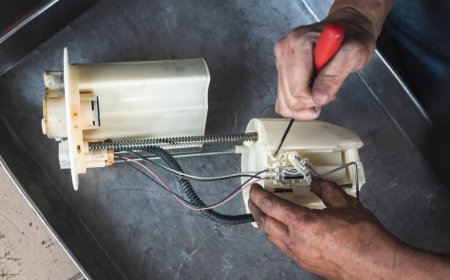How to Negotiate Credit Card Debt Settlement Yourself: A Step-by-Step Guide
Learn how to negotiate credit card debt settlement yourself and save thousands. Step-by-step guide, tips, and proven strategies to take control of your finances.

Struggling with overwhelming credit card debt? You're not alone. Millions of Americans face the same challenge. But heres the truth: You dont always need to hire a lawyer or debt settlement company to find relief. With the right knowledge, confidence, and persistence, you can negotiate credit card debt settlement yourselfand save thousands in the process.
In this complete guide, well show you exactly how to negotiate credit card debt settlement yourself, explain what to expect, and give you proven strategies that work. Whether you're behind on payments or just looking to avoid bankruptcy, this post will walk you through each phase of DIY debt settlement.
? Ready to take action now?
? Start Your Debt Settlement Journey Here Mountain Debt Relief
What Is Credit Card Debt Settlement?
Credit card debt settlement is a process where you negotiate directly with your credit card company to pay less than what you owe. Typically, the creditor agrees to forgive a portion of your debt in exchange for a lump-sum payment or a short-term repayment plan.
This approach works best if:
-
Youre behind on payments (usually 90+ days delinquent)
-
Youre experiencing financial hardship (job loss, illness, divorce, etc.)
-
You have a large outstanding balance
-
You can offer a lump sum or partial payment
DIY debt settlement requires preparation, patience, and the ability to advocate for yourselfbut it can help you avoid long-term debt or bankruptcy.
Pros and Cons of Settling Credit Card Debt on Your Own
? Pros:
-
No need to pay fees to debt settlement firms
-
You stay in control of the process
-
Potential to settle for 40%60% of what you owe
-
Learn valuable financial negotiation skills
? Cons:
-
Can damage your credit (temporarily)
-
Creditors may not agree at first
-
You must be prepared to negotiate confidently
-
Tax implications on forgiven debt
Understanding these trade-offs helps you enter negotiations with clarity and realistic expectations.
How to Negotiate Credit Card Debt Settlement Yourself (Step-by-Step)
Lets dive into exactly how you can negotiate your credit card debt like a pro.
Step 1: Evaluate Your Financial Situation
Before you pick up the phone, take stock of your financial health:
-
How much do you owe?
-
How long have you been behind on payments?
-
Can you afford a lump-sum payment or partial monthly installments?
Knowing what you can realistically offer will determine your negotiating power.
? Pro Tip: Have a specific amount ready that you can pay upfront. Creditors are more likely to accept settlement if they know theyll receive cash quickly.
Step 2: Understand Your Creditors Policies
Not all creditors treat settlements equally. Some are more flexible than others.
Do a little research or check forums like Reddit or Credit Karma to see what others have successfully negotiated with your specific creditor.
Step 3: Contact the Right Department
Call the creditors Debt Settlement or Hardship department, not the regular customer service line. You want to speak with someone who has the authority to discuss settlements.
Heres a sample script:
Hi, Im facing financial hardship and cant afford to pay off the full balance on my credit card. Id like to discuss settling the debt. Can I speak to someone who handles debt settlements?
Step 4: Make a Reasonable Offer
A good starting point is to offer 30%50% of your total debt. Be polite but firm.
Example:
If you owe $10,000, start by offering $3,000 as a lump-sum settlement. The creditor may counter with a higher number, so be prepared to negotiate.
Never agree to anything you can't afford.
Step 5: Get the Settlement Agreement in Writing
Before you send any money, get everything in writing:
-
Total amount to be paid
-
Payment deadline or schedule
-
Agreement that this amount satisfies the full debt
Do not trust verbal promisesonly written agreements are enforceable.
Step 6: Make the Payment (and Keep Proof)
Send your payment using a traceable method like a cashiers check, money order, or online bank transfer. Keep records of:
-
Payment confirmation
-
Settlement agreement
-
All communication with the creditor
This protects you in case the creditor later claims the debt wasnt settled.
Step 7: Follow Up and Check Your Credit Report
After 3060 days, pull your credit report from all three bureaus (Experian, Equifax, TransUnion) to ensure the debt is marked as:
-
Settled or Paid Settled
-
Balance: $0
If not, dispute the entry with documentation showing the settled status.
Realistic Settlement Scenarios
| Original Balance | Negotiated Settlement | % Forgiven |
|---|---|---|
| $5,000 | $2,000 | 60% |
| $7,500 | $3,000 | 60% |
| $10,000 | $4,500 | 55% |
These numbers vary based on account age, creditor policies, and your negotiation approach.
Common Mistakes to Avoid
? Not Getting the Deal in Writing
Verbal agreements wont hold up. Always get written confirmation.
? Offering Too Much Too Soon
Start lowyou can always go higher, but you cant go back down.
? Missing Settlement Payments
Once a deal is made, missing a payment may cancel the agreement entirely.
? Ignoring Tax Implications
Forgiven debt over $600 may be taxable. You may receive a 1099-C form. Consult a tax advisor.
Alternative Options If Settlement Doesnt Work
If your creditor wont negotiate or if you can't make a lump sum payment, consider:
-
Debt Management Plans Lower interest rates via nonprofit credit counseling
-
Balance Transfer Cards Shift debt to 0% APR for a limited time
-
Debt Consolidation Loans Combine multiple cards into one lower monthly payment
-
Bankruptcy Last resort if all else fails
Is DIY Settlement Right for You?
? Youre not afraid to negotiate
? You have a lump sum or can pay in 23 months
? You understand the risks and benefits
? You want to avoid third-party fees
If you check those boxes, negotiating credit card debt settlement yourself could be the best decision you make this year.
Final Thoughts
Knowing how to negotiate credit card debt settlement yourself can put the power back in your hands. You can resolve your debt for a fraction of the amount, protect your income, and finally breathe againwithout paying thousands to a settlement company.
? Ready to take control of your debt and secure a fresh start?
? Follow Our Proven Settlement Tips Mountain Debt Relief
Debt doesnt have to define your future. Youve got thisand were here to help every step of the way.






































